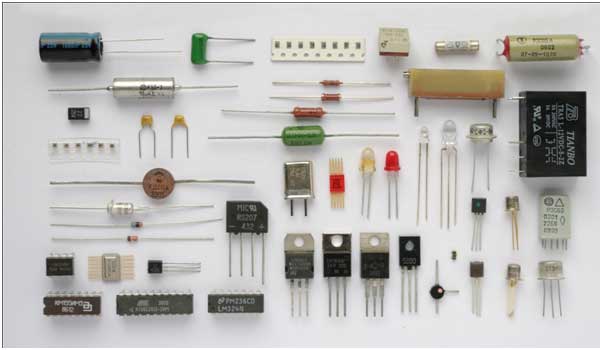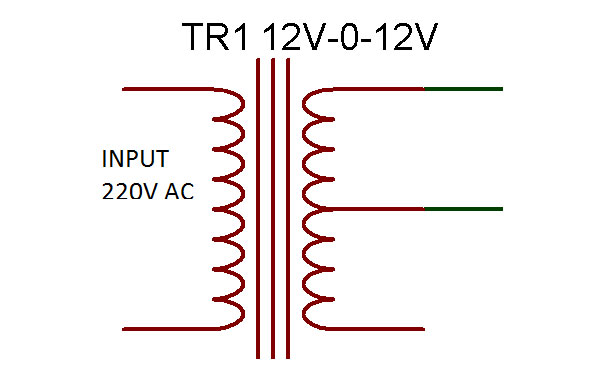Adjustable Constant Current Source
About Constant Current Source
A constant current source is used to provide a constant current regardless of the input voltage and output load. This type of circuit is also used as a current limiter. Every electronics device has some current rating above that rating the device may damage or it will not work properly. Therefore there is a big requirement of the constant current source in electronics. In this experiment, we are designing an adjustable constant current source which supplies 25mA constant current at the output regardless of load resistance and input voltage.
Overview
In this experiment, an adjustable current source is developed which can supply a constant current of 25mA at the output. The constant current of 25mA in this circuit can be changed as per requirement by just changing the value of a single resistance in the circuit. Hence we can say this circuit is an adjustable constant current circuit. The circuit can be adjusted to provide a constant current up to 1.5A.
Components Required
| Components Required | Specifications | Quantity |
|---|---|---|
| TR1 | 12V-0-12V/2A | 1 |
| Voltage Regulator | LM 317 | 1 |
| Resitance R | 50ohm | 1 |
| Diode D1-D4 | SR560 | 4 |
| Fuse | 1.5A | 1 |
Basics of Power Supply
Every DC power supply needs some steps to follow for getting proper DC voltage at the output. Below diagram shows these basic steps by which we get a regulated DC power supply by AC.

BLOCK DIAGRAM
Working
• Step down the Mains supply by input transformer
The voltage of Mains (Electricity coming at our home from the government) is approximately 220V but as per the circuit requirement, only 12V is required at the output terminal. To reduce this 220V to 12V, a step-down transformer is used.
The best suitable step-down transformer that meets our voltage and current requirement is 12V-0-12V/2A. This transformer step downs the main line voltage to 12V, as shown in the below image.

• Rectification
The rectification is the process of converting AC to DC. There are two ways to convert an AC signal to DC. One is through half wave rectifier and another is by using a full wave rectifier. In this circuit, we are using a full wave bridge rectifier for converting the 12V AC to 12V DC. As full wave rectifier is more efficient than a half wave since it can provide complete use of both the negative and positive side or part of AC signal. In full wave bridge rectifier configuration, four diodes are connected in such a way that it generates a DC signal at the output, as shown in below image. During full wave rectification, at a time two diodes become forward biased and another two diodes are reversed biased. We have chosen the SR560 diode because they can allow 1.5A current through them when forward biased and in reverse biased condition, they can sustain reverse 12V supply. Due to this, we are using SR560 diodes in rectification purpose.

• Voltage regulation by LM317
About LM317 IC
LM317 is one of the popular adjustable positive voltage regulators. The LM317 IC has various features like over voltage protection, internal current limiting, overload protection, low quiescent current (more stable output), safe area compensation (internal circuitry limit the maximum power dissipation so it does not self-destruct). This can provide output in the range of 1.25V to 37V with the input voltage up to 40V. It can provide a maximum current of 1.5A at the output.
Key Principle of 317
Internally an OPAM is there in the IC whose inverting input is connected with the adjustment pin. The non-inverting input is set by a band gap voltage reference whose voltage is independent of the temperature, power supply, and circuit loading. Thus LM317 gives a stable reference voltage of 1.25V under nominal conditions. The reference voltage can be from 1.2V to 1.3V.
• How 317 works as constant current source
A 12V DC supply is connected to the input pin of 317.For setting the constant current at the output a resistance R is connected from the output to adjustment pin of 317.In a normal state when there is the constant demand of current at the output then 317 will maintain a voltage of 1.25V at its adjust terminal. Therefore the voltage across R is also 1.25V. As the current demand changes at the output then it should also change the voltage drop across R but 317 will adjust the output voltage to compensate a constant 1.25V drop across resistance R.
Iout = 1.25/R
For changing the output constant current we can change the value of R.

• Output Current
Due to the constant 1.25V reference voltage of the LM317, it provides a constant current at the output. By using this key quality of 317 an adjustable constant current source can be designed. The 317 IC will provides current up to 1.5A if the proper heat sink is applied to the IC.
As the IC will able to provide a minimum current of 10mA and maximum 1.5A.
The minimum value of resistance R in the circuit is – :
Rmin = 1.25/ Imax
Rmin = 0.83 ohm
The maximum value of resistance is – :
Internally tolerable power dissipation of LM317
The 371 internally can sustain up to 2W power dissipation. Above 2W the IC will not tolerate that much of heat and it starts burning. This may cause a serious fire hazard also. So a heat sink is needed to dissipate the excessive heat from the IC.
Practical results
Case 1 :
When a resistance of 50 ohm is connected from the output pin of 317 to adjust pin
|
Load resistance (ohm) When R= 50 ohm |
Output current (mA) |
|---|---|
| 10 | 24.6 |
| 50 | 24.6 |
| 100 | 24.6 |
Theoretical observation of output current = 1.25/R
Iout = 1.25/50
Iout = 25mA
Power dissipation of regulator when R = 50 ohm
Case 2 :
When a resistance of 25 Ohms is connected from the output pin of 317 to adjust pin
|
Load Resistance (ohm) When R= 25 ohm |
Output Current (mA) |
|---|---|
| 10 | 49.8 |
| 50 | 49.8 |
| 100 | 49.8 |
Theoretical observation of output current = 1.25/R
Iout = 1.25/25
Iout = 50mA
In both the cases by varying the R in the circuit, we can change the value of constant currentInternally 317 is capable of handling power dissipation to 2W so here it is less than 2W but it is recommended to use a heat sink to aid cooling to IC and to increase the lifespan of the IC.
Applications
Points to Remember
• The current rating of a step-down transformer, bridge diode and voltage regulator must be greater than or equal to the maximum current required at the output. Otherwise, the circuit will be unable to supply the required current at the output.
• The dropout voltage of LM317 IC is about 1.5V to 2.5V depending upon the output current. Thus input voltage must be 1.5V to 2.5V greater than the maximum voltage drop across the load. The voltage drop across the load can be calculated by, V = I(constant current) * R(Load Resistance)
• For driving high load at the output, heat sink should be mounted at the holes of the regulator. This will prevent the IC from blown off.
• The Proper heat sink is required for power dissipation above 2W
• Current drawn at the output should not be greater than 1.5A otherwise it will damage the IC.
• As our circuit can be adjusted to draw a current of 1.5A at the output. A fuse of 1.5 A is to be connected to the output of the rectifier. This fuse will protect the circuit for current greater than 1.5A. For current above 1.5A, the fuse will blow off and this will cut the input supply from the circuit.
Project Source Code
Project Source Code
###
//Program to###
Filed Under: Electronic Projects


Questions related to this article?
👉Ask and discuss on Electro-Tech-Online.com and EDAboard.com forums.
Tell Us What You Think!!
You must be logged in to post a comment.